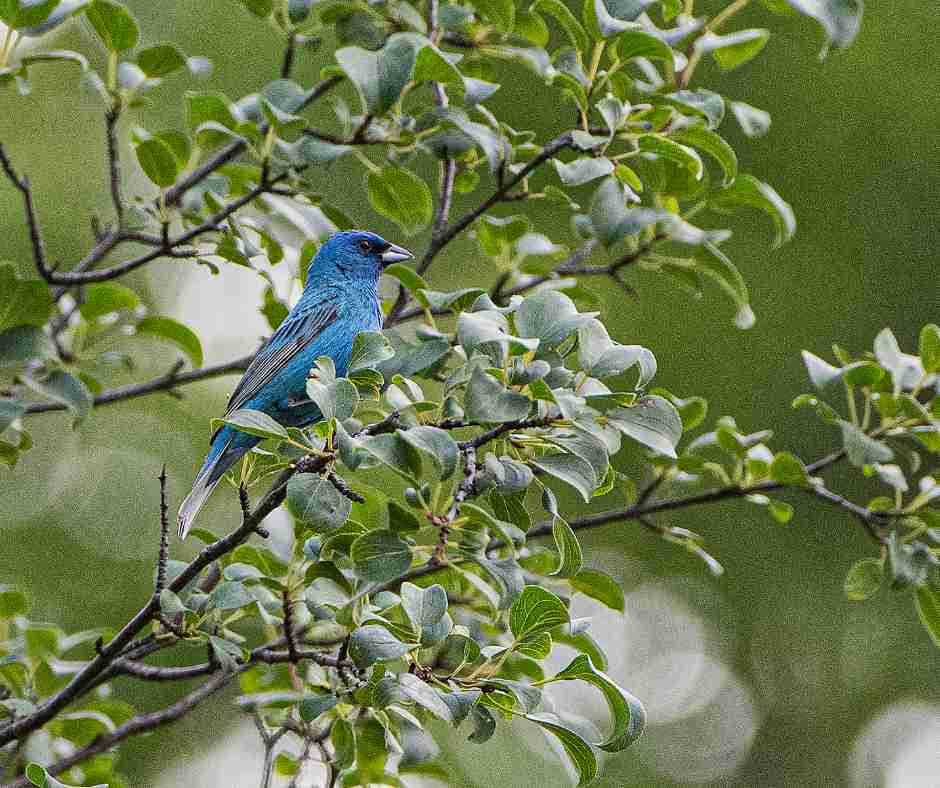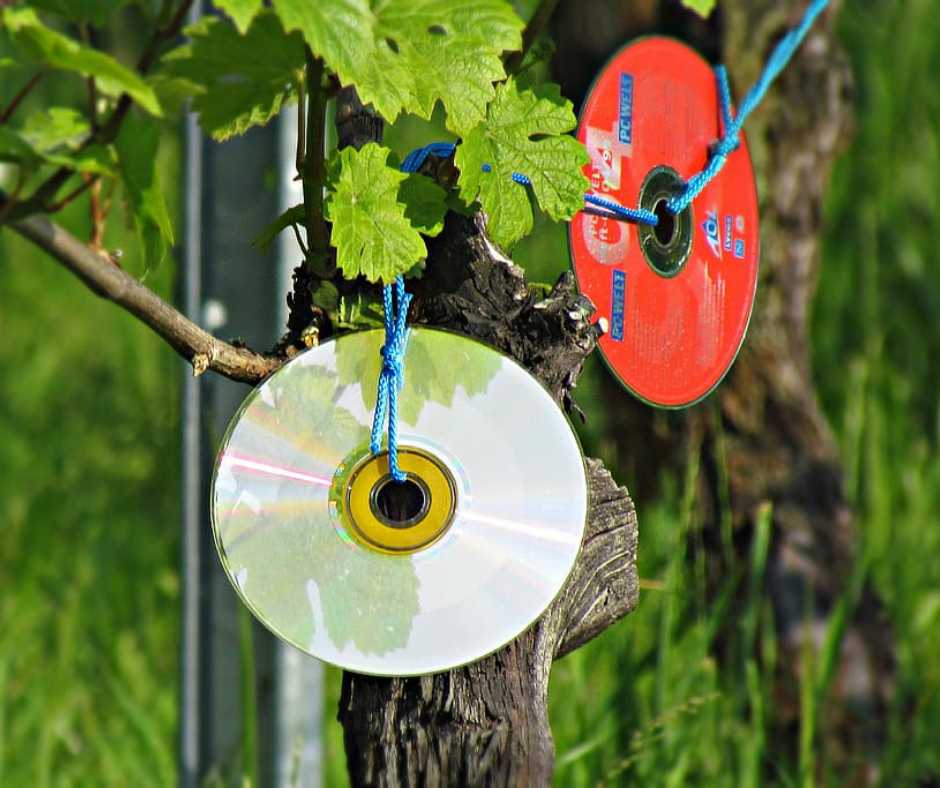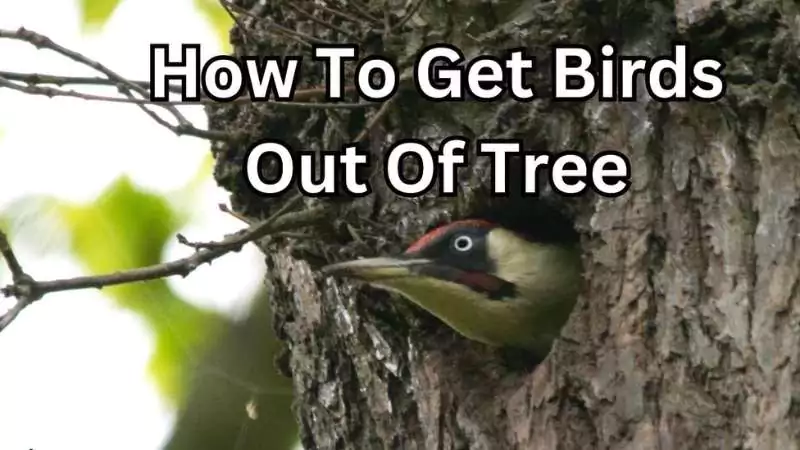Do you need help with uninvited feathered guests in your trees? You’re not alone. Many face the challenge of how to get birds out of trees without harming these natural companions.
To deter birds from trees, use reflective objects and sound devices to scare them, apply strong-smelling essential oils like peppermint, prune to remove nesting spots, install netting as barriers, and seek professional wildlife control services for challenging cases.
From the fascinating reasons birds choose trees for their homes to the unintended consequences on our cars and driveways, this blog explores humane and practical strategies to encourage birds to roost elsewhere.
Discover how reflective objects, sound deterrents, and specific scents can make your garden less appealing to birds. Plus, learn when to seek professional help for persistent bird problems. Dive into a blend of insights and practical tips to harmonize your outdoor living spaces with nature.
Understanding Bird Behavior in Trees
Trees and birds are natural buddies. Have you ever wondered why birds pick trees to hang out, nest, and snack? It’s like looking at the world from a bird’s perspective and understanding their love for trees.
Why Birds Choose Trees for Nesting and Roosting
Think of being a bird for a second. You’re searching for an excellent place to relax, find food, and raise a family. Trees are the ultimate living spots, offering branches for protection from ground enemies, leaves that shield against rain, and a buffet of insects and fruits. It’s everything a bird could wish for in a home.
Safety plays a significant role, too. Trees are like lookout towers, offering birds a view of any approaching danger. The higher they are, the safer they feel from predators like cats. It’s their secure haven, minus the annoying fees.

The Impact of Birds on Trees and Surroundings
While birds in trees can be delightful, their presence is only sometimes a walk in the park for us or the trees. The sound of birds might be soothing, but their droppings? Not so much, especially when it’s all over your car or driveway.
For the trees, it’s a trade-off. Birds, like woodpeckers, search for food or make homes in the bark, which can hurt the trees. They don’t mean any harm; they’re living their life. However, this can lead to tree damage and health problems.
Also, when many birds gather in one tree, their droppings can make the soil not so great, like using too much plant food in your garden.
Birds like trees because they offer them a place to stay, food, and safety – like we love living in comfy, safe homes. While we enjoy seeing birds and hearing their songs, keeping things clean and balanced for them and us is essential. We want to create a space where people and birds can live happily together.
Strategies to Deter Birds from Trees
Finding a middle ground where our leafy friends can thrive without becoming a playground for birds involves creativity. Let’s explore how to gently persuade our winged visitors to find a new hangout spot without causing them any harm.
Natural and Humane Deterrents to Keep Birds at Bay
Picture this: you decide to decorate your garden trees with shiny CDs, thinking it might give them a bit of sparkle. Interestingly, this disco ball effect does more than beautify your garden—it turns out birds aren’t fans of shiny things.
Reflective surfaces like aluminum foil or old CDs hanging from branches dazzle in the sunlight, confusing and scaring birds away. It’s their kryptonite.
Then there’s the power of sound. Imagine if you loved classical music, and suddenly, there was blaring heavy metal everywhere you went. You’d probably look for a quieter place, right? That’s how birds feel about specific sounds. Devices that mimic predator calls or emit irregular, noisy sounds can make birds think twice about lounging in your trees.
But why do these tactics work? Birds rely on their senses for survival. Anything that messes with their vision or hearing can make them feel unsafe. By using these sensory deterrents, we’re not harming the birds; we’re encouraging them to move to a safer place—for them.
Read more: Best Bird Deterrent

The Role of Smell in Bird Deterrence
Birds can smell well; like us, they don’t like smells. They don’t react to smells like bugs or mice, but solid and natural smells can make them not want to visit your garden.
Using smells like peppermint, lemongrass (Cymbopogon), or garlic spray can help keep birds away from your trees. It’s like when you add too much spicy chili to food, and it doesn’t taste good anymore. When birds smell these strong scents where they used to hang out, they’ll probably go elsewhere.
If you mix these smells with things they can see and hear that they don’t like, it works even better. This way, we’re not being mean to the birds; we’re encouraging them to hang out somewhere that’s better for them and us.
By doing this, we can have a lovely garden and still enjoy seeing the birds from a bit farther away. This way, everyone is happy and gets along.
Preventive Measures and Solutions
Pruning: A Key Strategy in Bird Control
Trimming your trees is like fixing up a story; you take out parts you don’t need to make it better. Trimming trees makes them look nice and healthy and less cozy for birds to construct homes in.
Birds like thick, leafy spots to hide their nests. You make your trees less inviting by cutting back branches, especially those that stick out right for nests. This is an innovative and kind way to keep bird numbers down in your yard.
Barrier Methods: Netting and Covers
Putting netting or covers on your trees is like hanging up a “Keep Out” sign for birds. It’s a friendly way to tell them they can’t stay. Picture giving your tree a soft hug that says, “Birds, please stay away.”
You have to be careful putting it up so you don’t accidentally trap birds. Done correctly, netting is like an invisible shield that protects your trees from becoming a bird diner or nesting spot. It’s all about living together with birds but setting some rules.
Professional Solutions for Persistent Bird Problems
Sometimes, no matter what we do, birds still want to hang out in our trees. If you’ve tried everything and birds still love your trees too much, it might be time to get some help. Calling wildlife control is like bringing in a team of experts who know precisely what to do.
They have unique ways to gently move the birds or keep them away without hurting them. Think of these experts as peacemakers who help everyone get along—the birds, your trees, and you.
People Also Asked
Can I use any kind of sound to scare birds away?
Not all sounds work. It’s best to use specific bird distress calls or predator sounds that are known to deter birds.
Is it legal to remove a bird’s nest from my tree?
It depends on where you live and the bird species. Always check local wildlife regulations first.
What’s the best time of year to prune trees to deter birds?
Late fall or winter, when trees are dormant, and birds are less likely to be nesting.
Do bird deterrents harm the birds?
No, the methods we’ve discussed are humane and designed to encourage birds to find a different spot.
Why do birds like my trees so much?
It could be due to the availability of food, shelter, or the tree’s structure. Identifying the attraction can help you target your deterrent strategy better.
Wrap Up
Dealing with birds in trees is like doing a gentle dance. We want to keep everything in balance—us, the trees, and the birds. We can all live together peacefully by learning about birds and using some smart tricks (like using CDs to keep birds away). It’s crucial to find solutions that are good for both the trees and the birds. The main goal is to create a place where plants and animals can thrive, caring for everyone’s needs.

